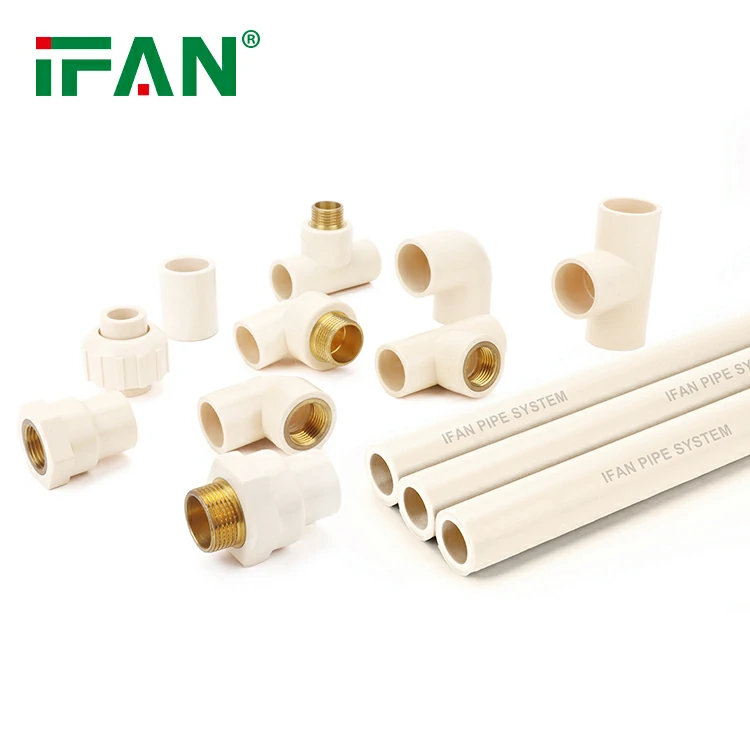Introduction: Understanding CPVC Pipe Fittings
CPVC pipe fittings are components made from chlorinated polyvinyl chloride. They are used in plumbing systems to connect, control, and direct water flow. These fittings have been used since the 1960s due to their durability and heat resistance. Unlike traditional metal fittings, CPVC is corrosion-resistant and lightweight. This has made it popular in both residential and commercial projects. Over time, materials like PEX and PVC have emerged, offering different advantages. But many still ask—are CPVC pipe fittings still used today? This article explores that question, examining their current use, advantages, limitations, and relevance in modern plumbing.
Continued Use in Residential Plumbing
CPVC pipe fittings are still commonly used in residential water systems. Many homes rely on them for hot and cold water lines. Their high temperature tolerance—up to 200°F—makes them ideal for household hot water systems. CPVC fittings are also easy to install using solvent cement, requiring no special tools. For DIY homeowners, this makes CPVC an appealing option. In older homes, CPVC systems are still operational after decades, proving their longevity. While newer materials are gaining popularity, CPVC remains a reliable choice in many new residential builds, especially in areas with high water temperature demands.
Presence in Commercial and Industrial Systems
Beyond homes, CPVC pipe fittings are also used in commercial and light industrial applications. CPVC systems handle aggressive water conditions and chemical exposure better than standard PVC. This makes them suitable for labs, schools, and certain manufacturing facilities. Fire sprinkler systems sometimes use CPVC fittings due to their fire resistance and compliance with safety standards. CPVC’s smooth interior surface reduces friction loss, maintaining strong water pressure. Although industrial preferences are shifting toward metal or more flexible piping systems, CPVC still holds value where chemical resistance is key. It continues to serve in settings that demand safety, durability, and affordability.
Comparison with Modern Alternatives
CPVC pipe fittings face stiff competition from newer materials like PEX and copper. PEX is more flexible and easier to install in tight spaces. Copper offers unmatched durability and is fully recyclable. However, CPVC stands out in environments where temperature stability and chemical resistance are needed. Unlike PEX, CPVC does not degrade with sunlight. Unlike copper, it is immune to corrosion from acidic water. CPVC pipe fittings also tend to cost less than copper ones. While each material has its niche, CPVC continues to be chosen in projects with specific thermal or chemical demands.
Common Applications Today
CPVC pipe fittings are used today in a variety of projects. In apartment complexes, CPVC provides cost-effective plumbing that can withstand years of use. In hospitals and schools, it is chosen for its cleanliness and resistance to scaling. CPVC is also used in some solar water heating systems because it handles high temperatures well. Retrofitting projects often use CPVC because it integrates easily with older systems. CPVC remains a trusted choice in municipalities with treated water systems that might corrode metal piping. These examples show that CPVC pipe fittings are far from obsolete. They remain relevant in many real-world scenarios.

Advantages That Keep CPVC Relevant
CPVC pipe fittings offer several distinct benefits that justify their continued use. They are non-toxic and safe for potable water applications. Their resistance to chlorine and other disinfectants ensures long-term reliability. CPVC is lightweight and reduces installation labor. It also has a long lifespan, often exceeding 50 years when installed properly. These benefits make CPVC attractive for cost-conscious builders and developers. CPVC pipe fittings also require minimal maintenance. Once installed, the system generally operates trouble-free. These attributes help CPVC retain a steady market share despite increasing competition from flexible and metallic systems.
Limitations and Challenges
Despite its benefits, CPVC is not without drawbacks. It can become brittle over time if exposed to UV light. It is not as flexible as PEX, making it harder to install around obstacles. CPVC cannot be buried directly in soil without protective sleeves. Solvent welding requires proper ventilation and cure times. CPVC pipe fittings can crack under freezing conditions if not properly insulated. Some plumbing codes are also beginning to favor more modern systems. These factors lead some contractors to prefer alternative piping materials. Still, for the right application, CPVC continues to perform reliably and affordably.
Conclusion: A Material That Still Holds Value
So, are CPVC pipe fittings still used today? The answer is yes. Though newer materials like PEX and copper are widely adopted, CPVC remains in active use. Its thermal resistance, chemical durability, and cost-efficiency ensure continued relevance. While it may not be the first choice in every situation, it offers strong advantages in many. CPVC pipe fittings are still installed in homes, schools, factories, and offices worldwide. They serve both new construction and retrofit projects. As long as their unique properties match the needs of the project, CPVC will continue to have a place in modern plumbing.

